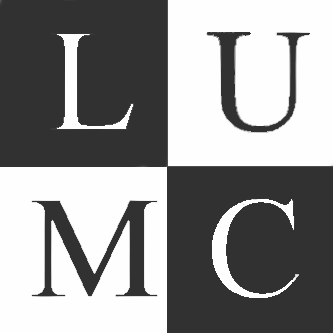Mariëtte Boon
Mariëtte Boon (1988) has studied Medicine and Biomedical Sciences and received her PhD degree at the dept. Internal Medicine cum laude (2014). During her PhD training, she has set up an interdisciplinary research line on brown adipose tissue biology and its therapeutic potential. She has received several research grants, including grants from the LUMC Board of Directors, Dutch Diabetes Research Foundation, NWO-Rubicon, RICS and European Foundation for the Study of Diabetes (EFSD). Furthermore, she has won several awards for her research, including the prestigious Heineken Young Scientist Award for Medicine 2016 and the Gratama Science Award 2019. She has supervised 6 PhD students so far and has published over 70 papers, including Nat Med, Nat Commun, Diabetes, Diabetologia and Cell Metab. She is one of the founders and previous chair of the ‘Young Dutch Society for Endocrinology’. Together with prof Liesbeth van Rossum (Erasmus MC), she has written the bestseller ‘VET belangrijk’, a book for the lay public on the working of body fat and how you can effectively combat overweight and obesity. In 2020, this book will be published in 10 countries. Currently, she is in training to become an internal medicine specialist (HMC+) and combines research with clinical training.
Her research mainly focuses on strategies to increase energy expenditure in order to combat obesity and associated disorders. She has specific interest in the effects on energy-combusting brown adipose tissue (BAT), studying both cold exposure and druggable targets. In preclinical models, she discovered several pharmacological strategies that enhance BAT activity and energy expenditure resulting in a reduction of obesity and improved glucose and lipid metabolism (2,3). Furthermore, she recently showed that human BAT can be pharmacologically activated by GLP-1R agonism (8). She also revealed that Dutch South Asians have less BAT, which may partly underlie their susceptibility to become obese and develop type 2 diabetes and cardiovascular disease (1). In addition, she studies the bidirectional interaction between the immune system and energy metabolism. For instance, she has shown that South Asians have lower expression of genes involved in interferon signalling in skeletal muscle and white adipose tissue, which may contribute to increased insulin resistance in this vulnerable population (5). Overall, the goals of her present studies are 1) To identify novel pharmacological strategies to enhance energy metabolism in humans with special focus on BAT; 2) To study whether pharmacological activation and/or recruitment of BAT in overweight pre-diabetic individuals improves whole-body metabolism and reduces metabolic disturbances including dyslipidemia; 3) To assess novel noninvasive tools to assess BAT activity and/or volume in humans; 4) To gain further insight on the bidirectional interaction between energy metabolism and the immune system by performing cold exposure and pharmacological intervention studies.
Selected publications
1) Bakker LEH & Boon MR et al: Brown adipose tissue volume in healthy lean south Asian adults compared with white Caucasians: a prospective, case-controlled observational study. Lancet Diabetes Endocrinol 2014; 2: 210-217
2) Boon MR & Berbée JFP & Khedoe PPSJ & Bartelt A et al: Brown fat activation reduces hypercholesterolaemia and protects from atherosclerosis development. Nat Commun 2015; 6:6356
3) Van Dam AD et al: Salsalate activates brown adipose tissue in mice. Diabetes 2015;64: 1544-54.
4) Boon MR et al: Tracing human brown fat. Nat Med 2015; 21: 667-668
5) Van Dam AD et al: South Asians have lower expression of interferon signalling genes in white adipose tissue and skeletal muscle compared to white Caucasians. Diabetologia 2017, 60: 2525-2528
6) Nahon KJ et al: Effect of sitagliptin on energy metabolism and brown adipose tissue in overweight individuals with prediabetes: randomised placebo-controlled trial. Diabetologia 2018, 61: 2386-23975
7) Boon MR et al: Effect of L-arginine on energy metabolism, skeletal muscle and brown adipose tissue in South Asian and Europid prediabetic men: a randomised double-blinded crossover study. Diabetologia 2019, 62: 112-122
8) Janssen LFM et al: Twelve weeks of Exenatide exenatide treatment increases [18F]fluorodeoxyglucose uptake by brown adipose tissue in nondiabetic males. Metabolism 2020, in press
Weblinks
Linkedin profile
Heineken Young Scientist 2016
Book ‘Vet belangrijk’
Publons



